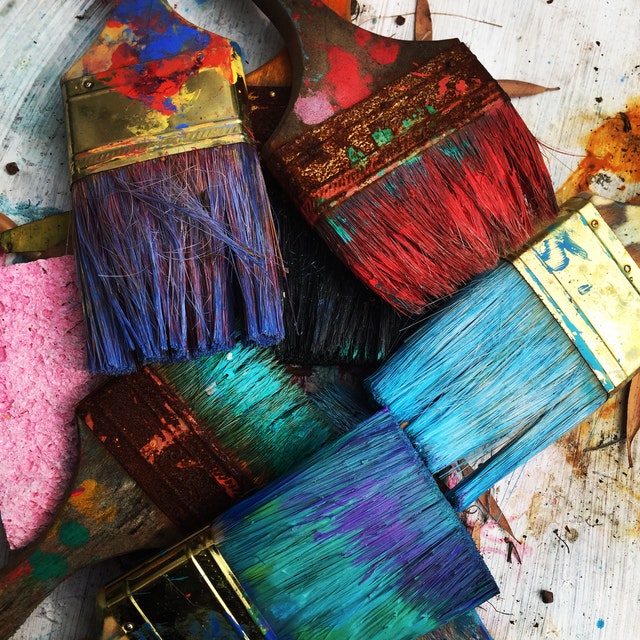Art helps toddlers learn about shapes, colors, and lines. It also nurtures his creativity, and brings out his deeper feelings. Give your toddler a chance to explore by providing opportunities to create collages, paint, draw, mold, and print.
Painting
Toddlers love to paint with their fingers! You can use finder paint, tempura paint, non-toxic shaving cream, whipped cream, mud, or pudding. Let your toddler paint on finger-paint paper, trays, smooth table tops, or vinyl placemats. Toddlers also enjoy painting at a low easel or on a table top with a chubby-handled paintbrush, cotton swabs, sponges, toy car wheels, or even clean toilet plungers (large paper on the floor works best with this tool).
Try limiting paint colors to one or two per painting activity. “Painting” with water is also popular with toddlers. Provide a wide-handled paintbrush (brushes used for house painting work well) and a container of water and allow your toddler to “paint” a wooden fence, sidewalk, etc.
Drawing and Sculpting
To give your toddler an opportunity to draw, provide jumbo crayons, water-based markers, jumbo chalk, white paper, and colored paper. Pounding, shaping, and molding play dough or gak is another important art experience your toddler will enjoy.
Making Collages
Let your toddler play with stamps, ink pads, and stickers on white or colored paper. When making collages, consider using paper with different textures, dried flowers, pipe cleaners, cotton balls, craft pom-poms, wooden dowels, bottle caps, postcards, greeting cards, gift wrapping paper, scraps of material, leaves, or photographs. He can use glue stick or school glue to make collages out of different materials. Older toddlers may be able to use small, blunt-nosed scissors.
That’s Music to My Ears!
Toddlers truly enjoy musical experiences! Music is also an important learning tool. Studies have linked musical experiences to brain development in science, mathematics, and engineering. Musical experiences also promote speaking and listening skills, balance and coordination skills, creativity, and relationship skills.
Sing and dance with your toddlers. You can sing songs with or without hand movements. Provide musical instruments such as rattles, drums, whistles, and tambourines. Singing a “clean-up song” (that you’ve made up or found) at the end of play time is a fun activity for toddlers, who usually don’t enjoy cleaning up. A teeth-brushing song that you sing while your toddler brushes her teeth can help her learn how long she needs to brush. (Ask your dentist how long she should brush. Time your song in advance so that you’ll know how many verses to sing.)
Music can be used for dancing, for calming your toddler at nap time, for developing listening skills, for storytelling, for developing movement skills, for transitions, and more. You can find a selection of songs online, or from local libraries and stores. Other parents, caregivers, and librarians can help you select music that is right for you, your toddlers, and the occasion.


